Unexpected Delight for Bird Watchers: the Ite Wetlands
- Pinterest19
- Facebook4
- Twitter2
- Reddit0
- Flipboard1
- Email0
- Buffer9
- 35shares
- Like
- Digg
- Del
- Tumblr
- VKontakte
- Buffer
- Love This
- Odnoklassniki
- Meneame
- Blogger
- Amazon
- Yahoo Mail
- Gmail
- AOL
- Newsvine
- HackerNews
- Evernote
- MySpace
- Mail.ru
- Viadeo
- Line
- Comments
- Yummly
- SMS
- Viber
- Telegram
- Subscribe
- Skype
- Facebook Messenger
- Kakao
- LiveJournal
- Yammer
- Edgar
- Fintel
- Mix
- Instapaper
- Copy Link
Seemingly endless sections of the coastal highway in Peru can be rather dull and boring. It’s an extremely arid landscape. Everything is bone-dry and dusty – nothing but endless sand and rocks. And then, driving around a bend, you suddenly sit up in surprise! Ahead you notice patches of juicy green amidst a wetland extending as far as you can see. And thousands of birds. Welcome to Ite, which seems to be one conservation project gone right!
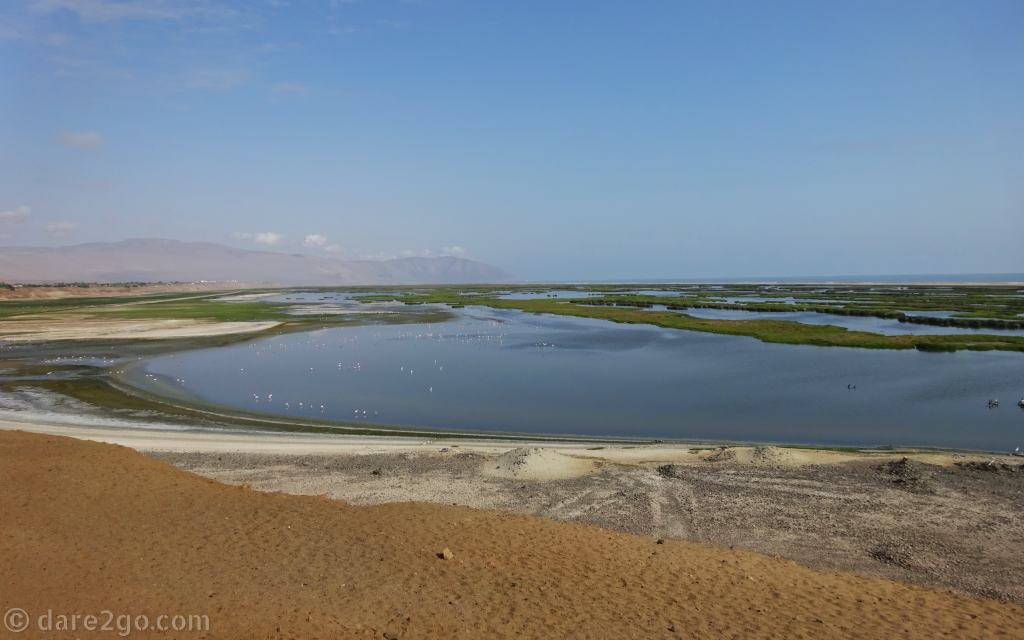
Overview of only a part of the Ite wetlands; they stretch much further! The white dots on the far left are where the museum is located.
You see, these wetlands are man-made. Until 1996, tailings from two inland copper mines were flushed, through specially built channels, to be deposited along the coast. Then an applaudable remediation process was initiated. This resulted in the rehabilitation and management of the area, some 1,300 hectares, and the creation of these wetlands – now the largest along the coast of Peru.
The Ite wetlands have quickly become an important habitat for over 120 species of birds (others have counted over 140). Many of them live there permanently; others use the wetlands as a seasonal breeding ground or a migration stop. Some of the birds, which find refuge at Ite, are listed as endangered. Now the old tailings have become a bird watchers’ paradise.
When we visited in late January, we saw more flamingoes here than anywhere else! Usually you see flamingoes in high altitudes of the Andean mountains, where they live in lagoons and some of the shallow waterways meandering through the plateaus of the Altiplano. But never more than maybe two or three dozen in one place; in Ite we saw hundreds (it could have been a thousand plus).

Ite wetlands: cormorants in the foreground, one egret (but there are many more), flamingoes, and many other birds.
We’re not birdwatchers per se, and we are certainly no experts at identifying unusual bird species. Nevertheless, we stayed several days to watch the birdlife at the Ite wetlands. It was simply a lovely spot to be, and peaceful to watch.
One thing, which was a little disappointing, was the fact that we only got mediocre photos. For wild- and bird-life photography we would need a longer zoom lens. When I walked down to the shore of the wetlands I still couldn’t get close enough for outstanding photos. First of all the edge of the wetland is really muddy, and your feet sink in very deeply, so you have to keep some distance. But foremost, the birds are extremely shy when humans approach. Grazing sheep can be less than 10 metres away but, as soon as any human comes closer than 50 metres, they all take flight.
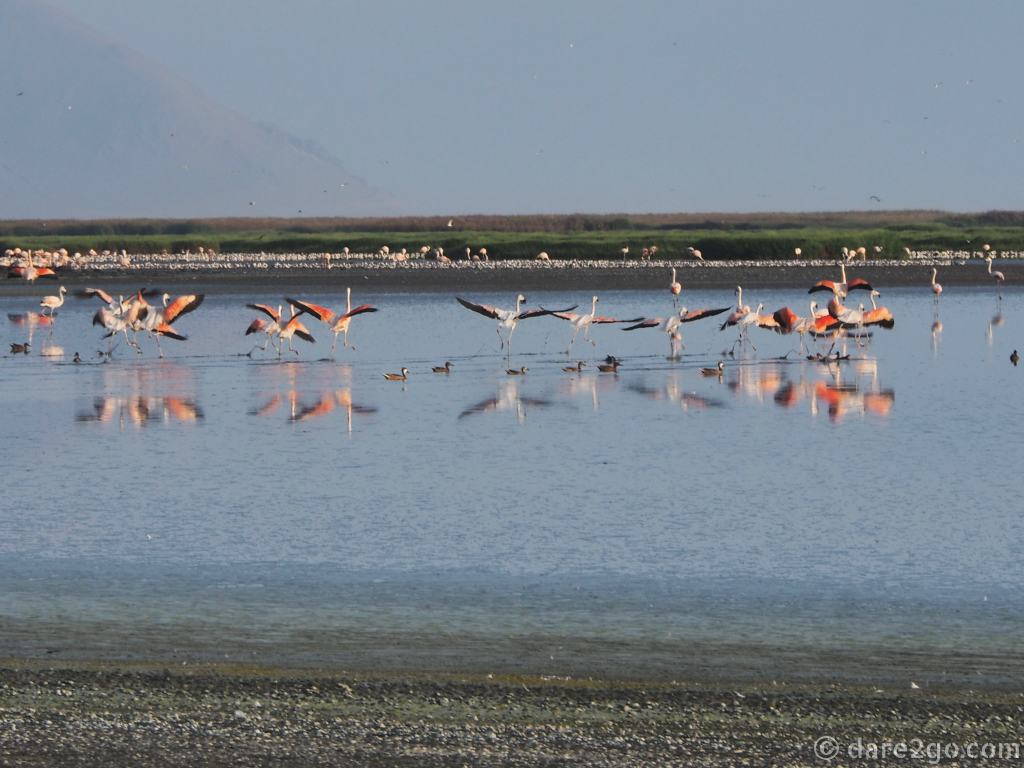
As soon as one comes closer to the flamingoes they all take off.
There is also (what’s called) a ‘Museum’ complex at the southern section of the Ite wetlands. When we wanted to visit, on a Tuesday, it was closed. Next to it is a large park, with mostly ‘creative concrete’ structures, and several viewing towers. Unfortunately, when we visited, there wasn’t much to see here as all the birdlife congregated towards the northern end of the wetlands.
Please click thumbnails below for a larger photo with description.
- This is what most of the landscape along the coast looks like: sand and rocks, nothing is growing.
- The ‘museum’ building sits at the south end of the town of Ite, overlooking the centre of the wetlands.
- Part of the park, next to the Ite Wetlands Museum, with a large concrete flamingo.
- There are several viewing towers in the park next to the museum.
Our tips to visit Ite’s wetlands – from an overlander point of view
The Ite wetlands are between Ilo and Tacna in South Peru, roughly 120 kilometres north of the border with Chile.
- Best bring a long zoom lens and/or some decent binoculars!
- Don’t forget sun protection as there is no shade anywhere!
- If you don’t want to spend several days consider spending at least a night! We parked, overlooking the wetlands with all the birds, at -71:0.78552, -17:52.6189 . This place gets some breeze and is fairly quiet; overnight there’s not much traffic on the nearby highway.
- Further north you find the Las Lagunas de Mejia, another important wetland for birdwatchers.
Links
A short case study about the remediation work at Ite
The Cornell Lab surveying the south coast of Peru (many local species named)
An Arequipa tour company offering birding trips to Ite
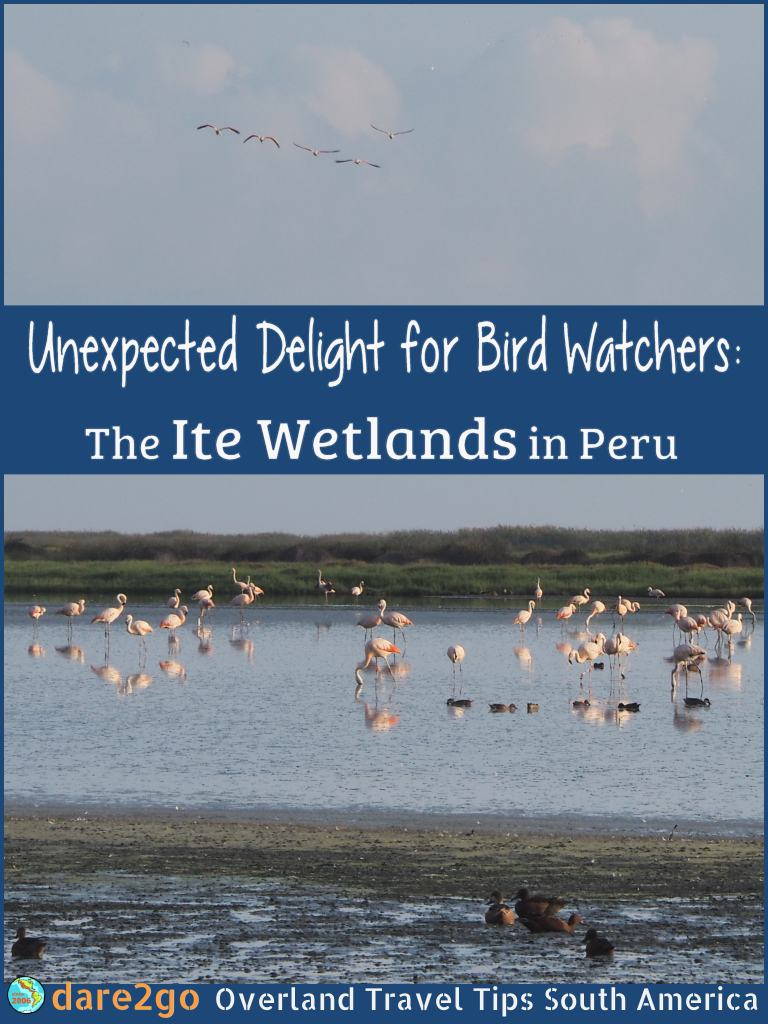
PIN THIS for later!
Please click thumbnails below for a larger photo with description.
- Ite wetlands: three flamingoes lined up.
- Ite wetlands: most of the time it’s difficult to catch the birds sitting still. Here are thousands in flight.
- Ite wetlands: we suspect that the group, in the middle of this photo, are flamingoes breeding.
- Ite wetlands: flamingoes near the shore.
- Pinterest19
- Facebook4
- Twitter2
- Reddit0
- Flipboard1
- Email0
- Buffer9
- 35shares
- Like
- Digg
- Del
- Tumblr
- VKontakte
- Buffer
- Love This
- Odnoklassniki
- Meneame
- Blogger
- Amazon
- Yahoo Mail
- Gmail
- AOL
- Newsvine
- HackerNews
- Evernote
- MySpace
- Mail.ru
- Viadeo
- Line
- Comments
- Yummly
- SMS
- Viber
- Telegram
- Subscribe
- Skype
- Facebook Messenger
- Kakao
- LiveJournal
- Yammer
- Edgar
- Fintel
- Mix
- Instapaper
- Copy Link




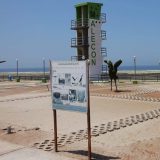
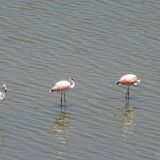

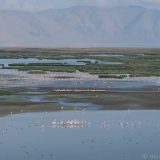
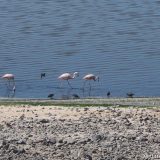

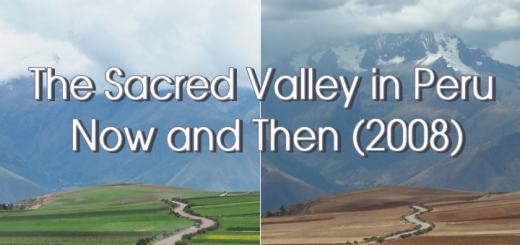
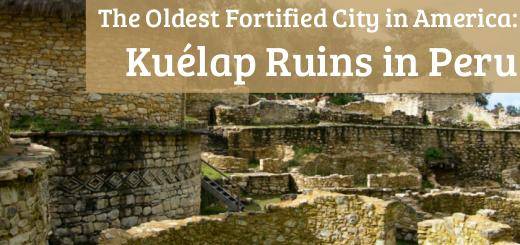









Wow! Ite is pretty far south in Peru. We like bird watching, and were in Ecuador last year doing lots of bird watching, and considering Peru next year. I will consider Ite Wetlands Bird watching if we go to Peru. Thanks for the insight.
These wetlands are certainly lovely. One thing I’m not sure about is if there is any accommodation in Ite. The trips from Arequipa are with camping on site (not everybody’s ‘cup of tea’).
I have not been to the ITE Wetlands, but am definitely a birder and would love to go. Peru is indeed a land of many natural wonders, and it’s hard to find time to see them all!
Yep, it’s the third largest country in South-America (after Brazil and Argentina). As it was home to so many different ancient cultures there are archeological sites all over the country, not only in the Sacred Valley around Cusco. I would think you could spend months in Peru and not see all. Then of course Peru has the second largest section of the Amazon rain forest…